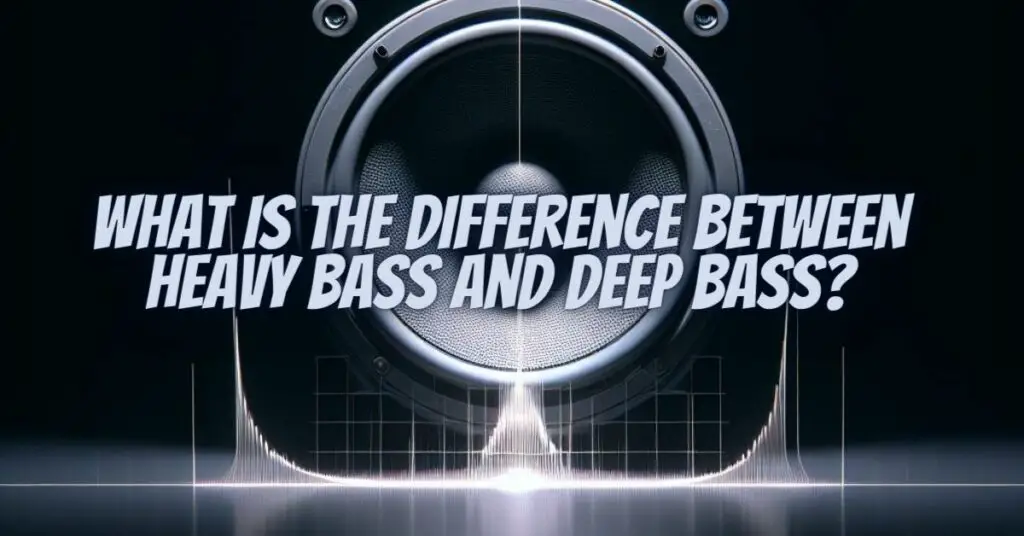When discussing audio and music, terms like “heavy bass” and “deep bass” often come up, but they refer to distinct aspects of the low-frequency spectrum. While both contribute to the overall sonic experience, they serve different purposes and have varying characteristics. In this article, we’ll explore the differences between heavy bass and deep bass, helping you understand their unique qualities and when to use them.
Heavy Bass: The Punchy Impact
Heavy bass refers to the perceptible weight and impact of low-frequency sounds in a musical or audio context. It’s characterized by its emphasis on mid-bass frequencies, typically between 80 Hz and 250 Hz. Here’s what sets heavy bass apart:
- Punch and Presence: Heavy bass is known for its punchy and powerful presence in the mix. It provides a palpable physical sensation, often felt as a thump in your chest or a kick in the gut.
- Rhythm and Groove: Heavy bass is crucial for establishing rhythm and groove in various music genres, such as hip-hop, EDM, and dance music. It propels the music forward and makes listeners want to move.
- Dynamic Impact: Heavy bass is responsible for the dynamic impact of certain musical elements like bass drums (kick drums) and bass guitar. It adds intensity and excitement to a track.
- Common Instruments: In heavy bass music, instruments like sub-bass synthesizers, bass guitars, and electronic drum machines play a significant role in producing the impactful, mid-bass-heavy sound.
Deep Bass: The Subsonic Foundation
Deep bass, on the other hand, refers to the lowest frequencies in the audible spectrum, typically below 80 Hz. This is where you find sub-bass frequencies, and they contribute a different set of qualities to the audio experience:
- Physical Vibration: Deep bass is characterized by its subsonic vibrations that you can often feel more than hear. These frequencies create a sensation of immense power and depth.
- Atmospheric and Spatial: Deep bass is essential for creating an atmospheric and spatial quality in music and sound design. It adds a sense of depth and dimension to the audio.
- Cinematic Impact: In film and gaming, deep bass is used to create dramatic and suspenseful moments. It’s often associated with earthquakes, explosions, and other awe-inspiring events.
- Subwoofer Territory: Deep bass frequencies are typically reproduced by subwoofers, which are specialized speakers designed to handle these extremely low frequencies.
The Complementary Role of Heavy and Deep Bass
In music and audio production, heavy bass and deep bass often work together to create a well-rounded sonic experience. While heavy bass provides the punch and groove, deep bass adds depth and dimension. They complement each other in the following ways:
- Groove and Impact: Heavy bass establishes the groove and rhythmic foundation, while deep bass adds the weight and cinematic impact.
- Emotion and Atmosphere: Deep bass contributes to the emotional depth and atmospheric qualities of the music, making it more immersive. Heavy bass adds excitement and intensity.
- Frequency Spectrum: Heavy bass primarily occupies the mid-bass frequencies, while deep bass covers the sub-bass range. Together, they fill out the entire low-frequency spectrum.
In summary, heavy bass and deep bass are distinct elements of the low-frequency spectrum, each serving its purpose in music and audio. Heavy bass provides the punch, rhythm, and impact, while deep bass adds depth, subsonic vibrations, and a sense of space. Understanding the differences between these two forms of bass is crucial for musicians, producers, and audio enthusiasts looking to craft impactful and immersive soundscapes.


